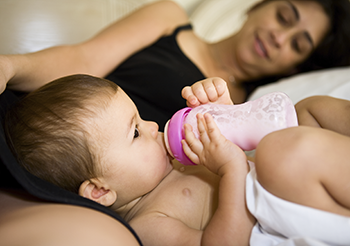The Effect of Birthing Method on the Infant Gut Microbiota: Difference between revisions
From MicrobeWiki, the student-edited microbiology resource
Meryl.jones (talk | contribs) No edit summary |
Meryl.jones (talk | contribs) No edit summary |
||
| Line 1: | Line 1: | ||
{{Uncurated}} | {{Uncurated}} | ||
=Abstract= | =Abstract= | ||
<br><br>Birthing methods, both vaginal and cesarean section play an essential role in the development of the infant. There has been recent interest and research surrounding the microbiome of the infant and how the bacteria they possess have a direct link to their delivery. The bacteria the infant ingests from the mother’s birth canal helps to build the immune system and better digest breast milk and solid foods. The changes of the vaginal microbiome during pregnancy give clues as to how similar the microbiome of that infant is and how important it be that the infant receives these bacteria.<br>The incidence of C-section relates to both the necessity of the procedure in times of emergencies, as well as elective surgery to potentially avoid the possible complications of birth. In the baby who is born via C-section, the microbiome that is developed is much less diverse than the baby born vaginally. These babies are at a higher risk of needing antibiotics, which can decrease bacterial diversity immensely. There is an increased risk for the development of asthma, allergies, obesity and other illnesses and diseases in those babies who are born C-section.<br> | |||
[[#References|(Akst, 2011)]] | [[#References|(Akst, 2011)]] | ||
Revision as of 19:49, 15 December 2015
Abstract
Birthing methods, both vaginal and cesarean section play an essential role in the development of the infant. There has been recent interest and research surrounding the microbiome of the infant and how the bacteria they possess have a direct link to their delivery. The bacteria the infant ingests from the mother’s birth canal helps to build the immune system and better digest breast milk and solid foods. The changes of the vaginal microbiome during pregnancy give clues as to how similar the microbiome of that infant is and how important it be that the infant receives these bacteria.
The incidence of C-section relates to both the necessity of the procedure in times of emergencies, as well as elective surgery to potentially avoid the possible complications of birth. In the baby who is born via C-section, the microbiome that is developed is much less diverse than the baby born vaginally. These babies are at a higher risk of needing antibiotics, which can decrease bacterial diversity immensely. There is an increased risk for the development of asthma, allergies, obesity and other illnesses and diseases in those babies who are born C-section.
The Human Flora
The Birthing History
newborn
newborn
Vaginal Birth
Changes of Mother's Microbiota in Pregnancy
GBS in Pregnancy
Cesarean Section Birth
Innoculating Newborns with Mother's Vaginal Secretions
The NICU
Breastfeeding and Infant Formula
Antibiotics and the Newborn
How Does Delivery Method Affect the Child's Life
Conclusion
References
Edited by Meryl Jones, student of Rachel Larsen at the University of Southern Maine

